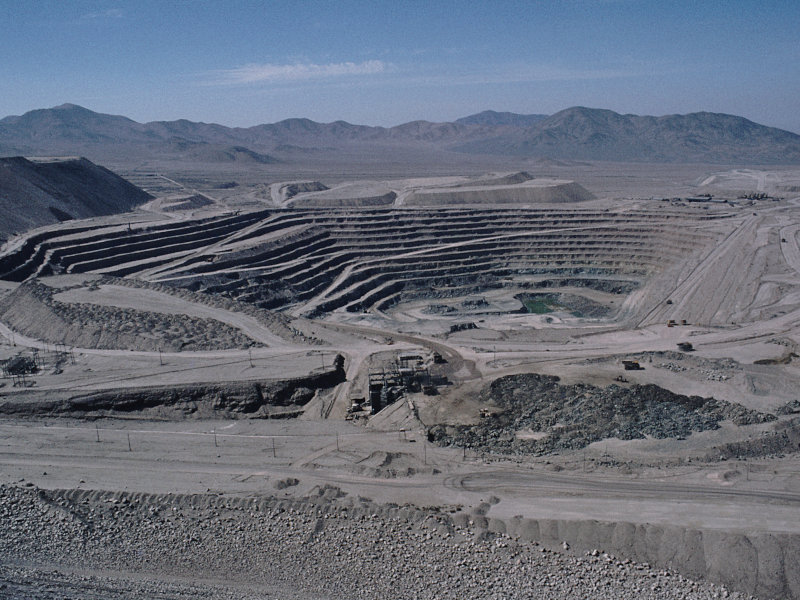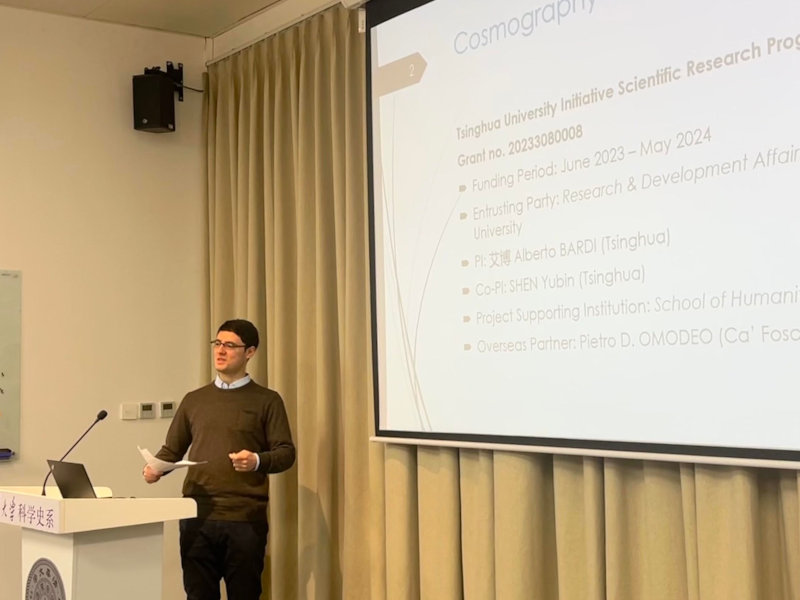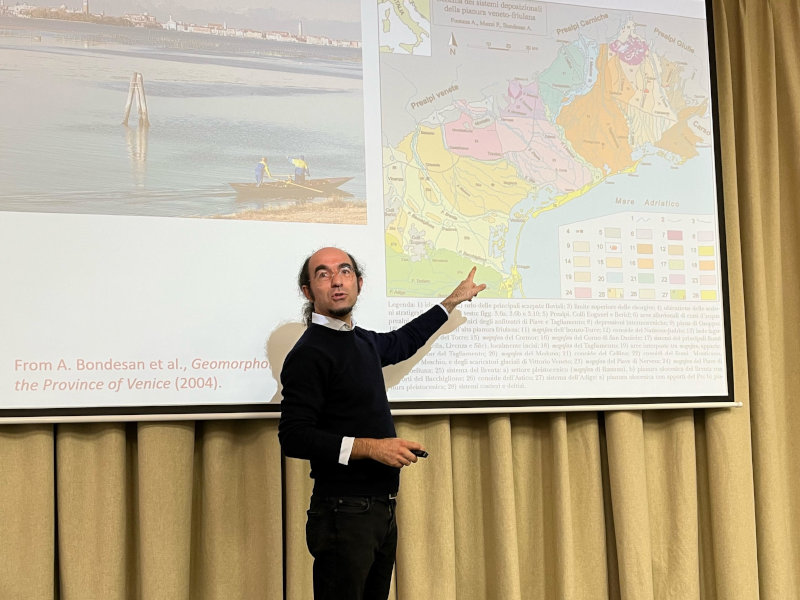Research - Case studies
Areas of inquiry
- Can we write a history of scientific knowledge based on the transformative interplay of nature and culture?
- Early-modern prospects on the anthropic history of Venice’s lagoon
- Knowledge institutions of water politics
- Water politics of sea tides
- Life habits and political iconography in a water city
- Comparative perspectives on the political economy of water resources
- Towards a political-epistemology of space: praxis-oriented cosmology

Method
Political epistemology
Political epistemology constitutes the theoretical framework of this project. Political epistemology brings into focus praxis (or ‘agency’) as a fundamental material-cultural dimension of science, in its collective and oriented character. It specifically looks at science as mediating between the socio-economic and the cultural-discursive. It evidences:
- the function of science to secure the production and reproduction of societal formations;
- the ideological function insofar as science provides for ways to justify and criticize social order and helps reorient, transform and imagine alternative ways of living.
The latter discursive dimension has informed the EarlyModernCosmology of, whereas the practical-material line of inquiry will be exploited by EarlyGeoPraxis.
Interdiciplinarity
EarlyGeoPraxis brings together scholars from different backgrounds and competences ranging from the natural sciences (particularly geology and environmental studies), to the social sciences (especially, environmental history, social history of knowledge and economic history) and the humanities (such as intellectual history, philosophy and the history of art).
Multimediality
EarlyGeoPraxis also envisages to develop multimedia strategies of research, storage, analysis and communication of the results. It will strengthen and secure the continuity of editorial projects launched within EarlyModernCosmology, particularly two open-access series based on a collaboration between Ca’ Foscari and the MPI for the History of Science, Berlin (MPIWG). In this framework we will experiment with new forms of editing manuscripts and linking sources.
Research projects
Towards a Transcendental Geology: A Cartography of the Anthropocene
Giovanni Fava
This project aims to explore the concept of the “Anthropocene” in both its scientific definition and philosophical reception.
The first part of the research is devoted to analyzing the various scientific meanings of the Anthropocene, particularly as developed within the scientific debate over the last 20 years.
The second part will focus on the philosophical interpretation of the concept, examining how it has been received within the social and human sciences, particularly in its connection with ontology.
The third part of the research will attempt to merge these two conceptual series (scientific and philosophical) to provide a comprehensive understanding of the Anthropocene, using the relationship between the historical conditions of knowledge and the material conditions of habitability as its hermeneutical key.
The Human Dimension: Society and Culture in the Hydraulic History of the Venetian Mainland. The Case of the Meolo River.
Meital Shai
Thanks to the foundation of the Provveditori ai Beni Inculti (1556), one of the best-documented sectors in the institutional history of the Venetian Republic is the hydraulic engineering works performed by the Venetians in the Early Modern period for the reclamation of swampy wetlands and for the better management and exploitation of fluvial water resources. These documents range from requests and protests by private property owners or consortiums, to comprehensive onsite visit reports by the office’s surveyors and engineers, to detailed scientific maps drawn to describe the human interventions planned and carried out in the natural environment.
The research seeks to decode the technical and administrative nature of these procedures, to reveal their underlying social, economic, and political conditions. It delves into the reasons, circumstances, and consequences for proposing and executing hydraulic operations, by focusing on the figures involved in promoting the projects or opposing to them, reconstructing their socio-political circle and cultural-scientific interests and knowledge. With the aid of the historical maps, the project also aims at the geographical identification of elements gradually disappearing from the cultural landscape, such as ancient toponyms, waterways, rural residences, inns, and watermills.
In its present state, the inquiry is centered on the Meolo, a small river flowing between the provinces of Treviso and Venice whose navigability was crucial since medieval times, especially for conducting firewood to the capital. However, due to a combination of natural causes, human negligence, and active interference, it often needed to undergo extensive cleaning campaigns of sediment excavation and riverbank reconstruction. Two such projects occurred during the 1560s and 1580s and are supported by a relatively detailed technical documentation, which constitutes the core of this study.
Whether these initiatives had been properly concluded, or interrupted, the exhaustive reconstruction of the working phases through the interactions with the office of the Provveditori ai Beni Inculti provides original insight on the area of the Meolo River and the figures operating around it, especially respected Venetian noblemen and their local properties, which included rural villas and watermills. In addition, by cross-referencing the written descriptions of the site with historical and modern maps, it is possible to identify the locations of these properties and other places of cultural significance mentioned in the documents, and hence, by combining the technical and visual data, to obtain a microhistory of the Meolo River as emblematic of Anthropocene Veneto in the Early Modern period.
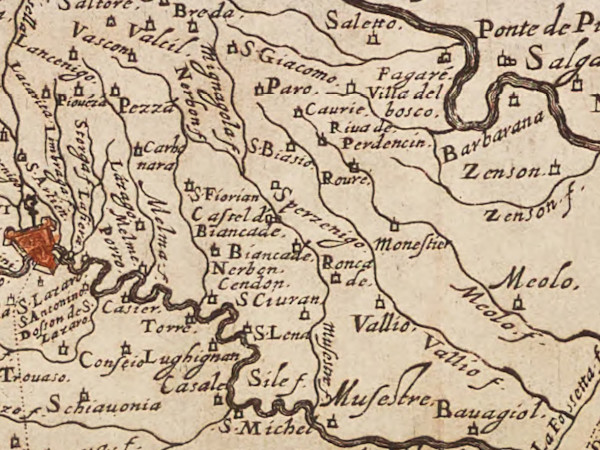
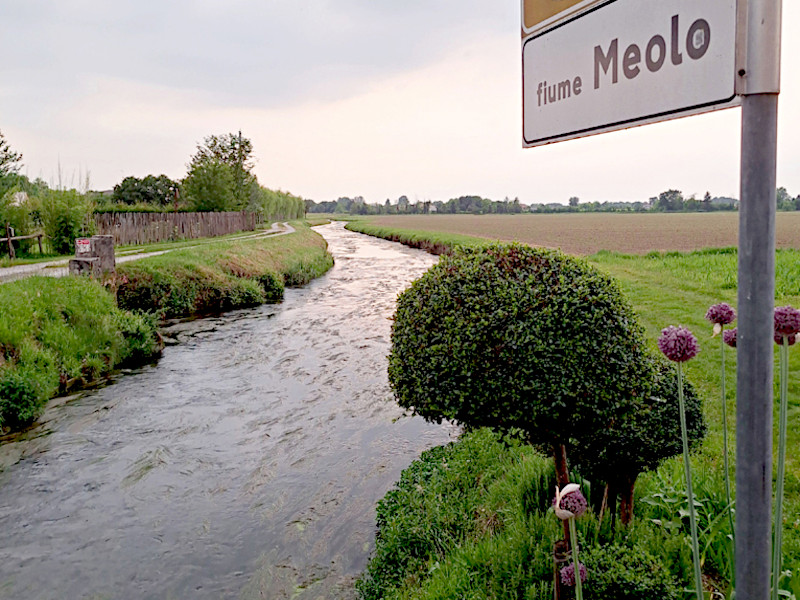
Cosmography of Historical Waterscapes
PI A. Bardi, S. Yubin, and P. D. Omodeo (main oversea partner)
Tsinghua University of Beijing and Ca’ Foscari University of Venice
Funded by the Tsinghua University Initiative, Scientific Research Program
Alberto Bardi and Pietro Daniel Omodeo received funding from Tsinghua University Initiative Scientific Research Program Grant for a research project on historical waterscapes.
The project Cosmography of Historical Waterscapes has received funding from Tsinghua University Initiative Scientific Research Program to pursue an investigation in the history of science that addresses very broad questions such as the role of knowledge in cultural dynamics and why global human society has increasingly relied on scientific knowledge, which both contributes to its survival and threatens it. On this account, this project undertakes a comparative investigation of historical waterscapes in diverse localities (but especially in Italy and China) with the objective of exploring the epistemological connections between cosmological and ecological knowledge in water-landscape politics.
This project establishes a cooperation between the Tsinghua School of Humanities and Ca’ Foscari University Venice, especially in the connection with four major international projects on environmental issues, namely, the UNESCO Chair of Water Heritage and Sustainable Development, the FARE Project EarlyGeoPraxis (funded by the Italian Ministry of University and Research), the Waterscape Unit at NICHE Center of Environmental Humanities, and the Max Planck Partner Group The Water City.
Historians and philosophers of science, Bardi (as Principal Investigator), Prof. Shen Yubin (co-PI), and Pietro Daniel Omodeo (main oversea partner), will work together with other scholars and meet at the School of Humanities and the Department of the History of Science to attend workshops and deliver lectures related to this project and foster international academic cooperation.
A Copernican Revolution in the Lagoon: When A Galilean Mathematician Tried to Solve the Hydrogeological Problems of Venice
Pietro Daniel Omodeo in collaboration with Senthil Babu Dhandapani (French Institute of Pondicherry and ETH Zürich), India and Swisserland and Sebastiano Trevisani (University IUAV of Venice)
The work "On the Measurement of Running Water" ("Della misura dell’acque correnti", 1629) by Galileo’s pupil, Benedetto Castelli has been considered one of the foundational works of modern hydrodynamics. It offered geometrical demonstrations aimed to make the measurement of running waters (the “misura”) possible through the isolation of few variables: the section of a waterway and its velocity. From this viewpoint, Castelli’s work represented another ‘Galilean’ attempt at mathematization.
However, Castelli was not able to convince the Venetian authorities that his method was apt to solve the main problems related to the conservation of the geoenvironmental equilibrium of the lagoon.
On the one hand, the Venetian authorities saw the diversion of rivers outside the lagoon as a measure to mitigate the infilling of sediment; on the other, Castelli argued, to the contrary, that it was precisely rivers’ diversion that produced an embankment effect, because it drove away a great quantity of water, which he accurately calculated.
His computational approach was dismissive of the comprehensive knowledge and complex methods that Venetian water experts had developed towards a systemic understanding of the hydrogeology and the environment of the lagoon.
They took into account manifold factors as varied as the rivers’ flows, sea tides, the relative positions of the sun and the moon, winds, and even the effects of anthropic interventions.
The dryness of Castelli’s reductionist approach, bolstered by his mathematical modeling of running water, was received with skepticism, even rage, thus rejected, in spite of the prestige of his connection with Galileo.
We reconstruct this controversy to dwell into the tension between mathematical abstraction and its claims to prescribe solutions to problems of the physical world, sparked off by Castelli’s claim that his mathematical treatment of running waters could solve all of the most urgent problems linked to the management of the Lagoon of Venice. From an epistemological viewpoint, we ask, to what extent it brought about a conflict between physico-mathematical abstraction (which resulted from the isolation of particular variables to yield a set of quantifiable data) against ‘geological’ concreteness (a form of comprehensive knowledge aimed to cope with systemic complexity). We assess whether the two different approaches were rooted in different societal arrangements and corresponding scientific practices, resulting in different modes of abstraction in practice.
To summarize, we a Renaissance case showing:
- the practical use of the Euclidean theory of proportions;
- its prescriptive function as a means of mathematical abstraction in landscape engineering;
- the politics behind such mathematical assessments, forms of expertise, and management of physical resources and their political management through technical prescriptions, tested in geo-engineering practice.
Hydro-geo-social Altepetl. The Dispute for the Environment in the Valley of Mexico
Omar Rodrìguez
Since pre-Hispanics times, land and water played a fundamental role in Mesoamerica. Within the Nahuatl culture, the traditional socio-political unit used to be called altepetl, that is, a union of ‘atl’, ‘water’, and ‘tepetl’, ‘hill’. In this conception, land, water and society were strongly connected and every altepetl conjoined an urban space with rural areas, forests and hydraulic resources. With the Iberian conquest, both nature and culture were transformed, introducing new species, viruses, techniques, practices, and concepts that had a significant impact on local environments and societies.
In this project, we aim to focus on the transformation of the Basin of Mexico whose lakes contained not only Mexico-Tenochtitlan City but also others altepetl(s). Under Iberian rule, the coexistence with the waters was gradually transformed into a struggle to free the city from the risk of flooding and later, into an engineering challenge to dry the lakes. Although turning the closed basin into an open valley has been an enormous task, little by little the urban vision and interests prevailed over those of the surroundings, and more and more land has been reclaimed to the lakes. This process increased in independent and contemporary Mexico, resulting in the huge megalopolis of today.
To study this geo-hydrological transformation of the Basin-Valley of Mexico, it is necessary to locate this process not only within the cross-cultural clash of European and American cultures and natures, but also in early globalization and the beginning of the modern world, including their colonial practices and anthropogenic impacts. So, although different ideas, practices, and interests have coexisted within the valley, their relationships have tended to be unequal. Therefore, this process has important epistemological and political implications, since a particular vision and project of society and nature have been imposed on the environment and surrounding communities. Not only throughout the Iberian rule, but also later with the ideal of progress and modernization. Thereby, this longue durée project has been supported by a scientific and quantitative approach focused on the engineering problem of flood prevention, lacking a more plural and ecological approach.
Given the current environmental problems that we face not only in the Valley of Mexico but worldwide, historical and comparative studies are essential to recover the disputes over spaces and the alternatives that, beyond hegemonical visions, have been proposed. Water heritage must be understood in a multicultural way and, in such manner, conceptual and practical alternatives can be updated to offer more comprehensive and ecological solutions in which some groups, interests, and spaces do not prevail to the detriment of others.
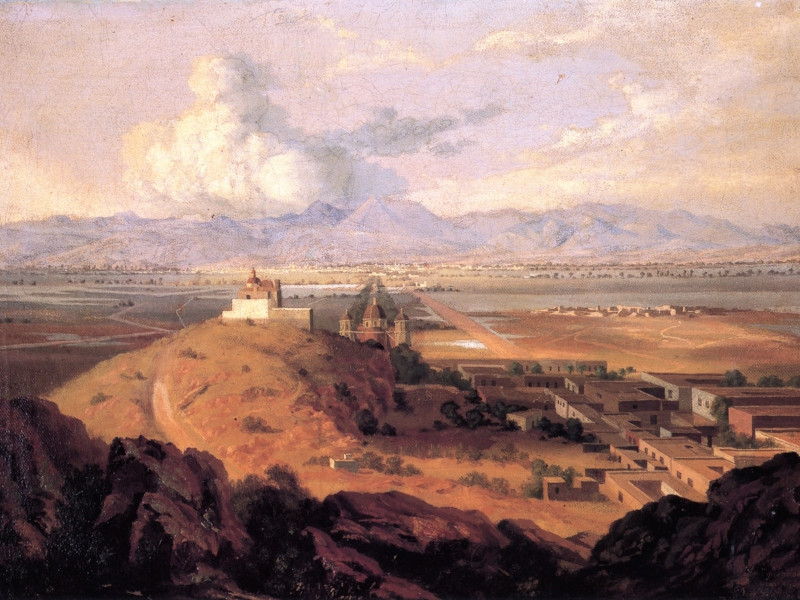
Credits: "José María Velasco: El antes y el después de su obra", by Emiliano Bautista Neumann.

Credits: "José María Velasco: El antes y el después de su obra", by Emiliano Bautista Neumann.
Towards a cosmic law: for ecosystem rights
Xenia Chiaramonte
Is there a place for cosmic law? How can law transform into a geo-praxis that pioneers new forms, capable of instituting and safeguarding ecosystems?
Presently, ecological discourse accords intrinsic value to natural entities, advocating their legal recognition. Yet, these ambitions often remain mere aspirations, failing to evolve into actionable entitlements. Paradoxically, this perspective inadvertently sustains the divide it seeks to bridge between humans and nonhumans thus reinforcing the exclusion of humankind.
Built upon an agency concept confined to the “matter”, humans seemingly lack an active role, assuming only historical responsibility. Conversely, the notion of geo-praxis aims to interweave the natural and cultural realms.
Within this framework, the primary inquiry shifts from "What does nature require?" to "What sort of geo-praxis do we aspire to institute?"
Interestingly, if we seek empirical evidence, we need not look further than the existence of Venice and its lagoon. In this case, humans do not contribute to their presumed role of solely polluting and destroying but are needed for a better cohabitation.
Law shall be envisioned as the tool shaping this transformative journey for the advancement of cohabitation's logic to guide collective choices. By "collective," we mean decisions thoughtfully examined and democratically embraced by social movements and citizens, utilizing grassroots strategies that prioritize subsidiarity.
This encapsulates the crux of the novel ecological paradigm: not merely a science governing local spaces, but a shared geo-praxis encompassing both animate and inanimate entities. The expansion of legal imagination is pivotal, moving beyond individuals to embrace ecosystem rights.
As seen in ecological harm, those affected are not solely humans or more-than-humans, nor only the individuals present or those closest to the land. It is the interconnectedness of elements and the ecosystem they belong to that suffer damage. A law commensurate with contemporary needs requires a radically new imagination, challenging the categories through which we have hitherto conceived the roles of individuals and collectives, the place of responsibility and organization.
Finally, in order not to dismiss the importance of indigenous epistemologies and cosmologies, one need to rediscover those that have inhabited “our” territory. Among our indigenous cultures, that of Roman civil law leaves us with a still little-explored, but crucially important, legacy. Assigning a value to common things, and instituting a non-proprietary belonging based on use rather than ownership is at the heart of the current debate on the commons. The res communes, excluded from commerce through an act of institution, are its Roman ancestors.
Mythology of Aquatic Elements in the Ancient Mediterranean
Krešimir Vuković
Rivers have played a crucial role in the rise and development of human societies since time immemorial. Current ecological crises call for a serious reconsideration of our relationship to rivers. Several countries (Ecuador, New Zealand, India) have responded to this challenge by granting rivers the legal status of persons. Some of these legislations were grounded in native traditions that regard rivers as living creatures. Similar concepts appear in many ancient cultures that regard rivers as non-human beings. While many have written about economic, geological, hydrological and other aspects of ancient rivers, the conception of rivers as non-human and more-than-human agents remains unexplored.
This project studies the perception and role of rivers and other waterways by investigating the variety of ancient conceptions of them as more-than-human agents that have actively shaped the world. Analyzing the religious and mythological aspects of river deities in their ancient contexts reveals a plurality of more-than-human conceptions of ancient waterways. The goal is to analyze the relationship of rivers to human communities in the ancient Mediterranean world, using both existing disciplinary tools in combination with the latest research in anthropology.
Ancient Veneto presents a fascinating case study as the rivers of Veneto determined both settlement patterns and mobility since the Bronze Age. The Venetian lagoon was shaped by an interplay of fluvial and marine dynamics into a unique aquatic environment, crisscrossed by a variety of waterways influenced by human and non-human factors.
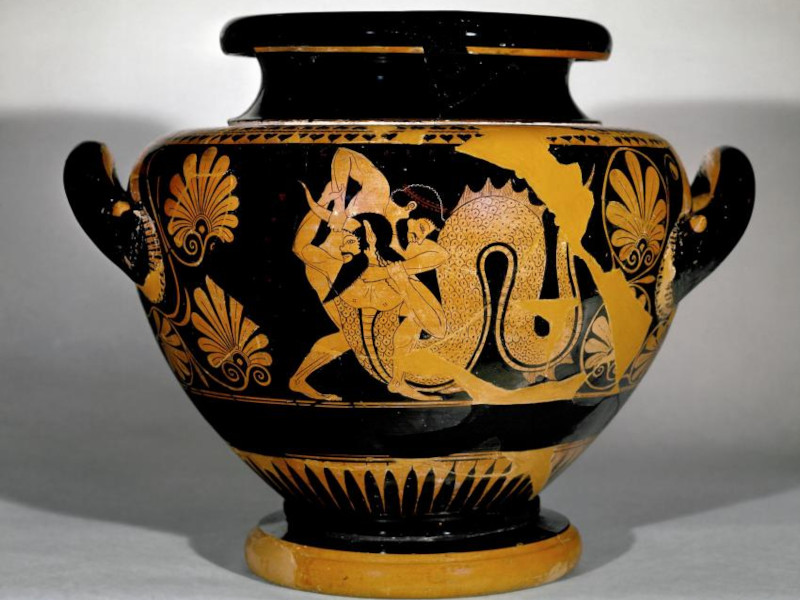
This work is licensed under a Creative Commons Attribution 4.0 International License.

